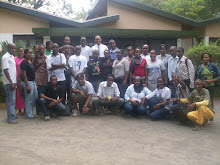Every time I get the opportunity to speak with communities in Meru district, particularly the rural communities over issues of community participation for effective management of forest resources, I note a great confusion that lies within the minds of these key stakeholders.
The confusion is solely raised by their lack of understanding of whether local communities’ participation in management of forest resources is part of their constitutional right or just a favor.
The concept of community participation as explained in Participatory Forest Management (PFM) is a term given to institutional arrangements in which various interested parties (stakeholders) participate in the conservation and management of a forest resource. Together with PFM comes Joint Forest Management (JFM) which apart from its other objectives, also aims to support a more ‘equitable distribution of benefits’.
Linking the two concepts, PFM and JFM, all derived from the 2002 Forest Policy, and at the same time reflecting the situation in Meru communities, the leaders who were expected to pioneer this participation, avoid this responsibility in order to skip the point of ‘equitable sharing of benefits’
Just two months ago, local communities in Nkwarisambu village terminated their village government after noticed that trees in Nkwarisambu Hill, which makes part of the village forest, were harvested, leaving the hill bare, and all this happened without their involvement. Practices like these are contrary to the primary objective of the of the JFM which aims at bringing decision making close to the primary users for more efficient, equitable and sustainable management and conservation of the forest and the forestland.
Various studies, including the one by the Ministry of Natural Resources and Tourism (MNRT 2001) have proved that, natural forest management mainly by state authorities resulted into ineffective management due inadequate involvement, motivation and clear benefits to local communities and other stakeholders.
Reasons as to why natural resource management practices should resort to community involvement are so many, among them being reducing unnecessary frictions between the local communities and the state organs, but also community involvement will enhance more effective management and sustainability of the resource. This has been said quite well in the forest policy and act.
The 1998 Forest Policy statement No 3 states that ‘to enable participation of all stakeholders in forest management and conservation, Joint Management Agreements with appropriate user rights and benefits will be established’. This simply means communities will be granted user right for the forest resource.
To top up the police statement, the 2002 Forest Act No 14 requires District Forestry staff to have new responsibilities to assist villages identify, survey, and manage their own forests for the benefit of whole community. This is to say, that ‘policemen role’ of the district forest staffs is no longer a deal, and that is why they are urged to have ‘new’ responsibilities, by the ‘new’ act.
Despite such directives from the forest policy and the forest act, there are still issues that need more attention. When it comes to Community Based Forest Management (CBFM) the 2007 Issued Guide requires CBFM to take place (only) inside village lands and outside Local Authority Forest Reserves.
Personally this does not reflect that sort of participation well elaborated in PFM, JFM and the 1998 Forest Policy. First, because due to population factor, some of the villages will never be able to have CBFM. Like the northern highlands of the country where the rural are densely populated, land being a very scarce resource and no village have open village lands.
Most of these areas are either neighboring a national forest reserve like the Mount Meru Forest Reserve currently under Arusha National Park or Kilimanjaro Forest Reserve under the Kilimanjaro National Park or even the local authority reserves. This has always been a source of clashes especially when communities seek their share in what has being defined to them as a national forest reserve. Everyone in the forest sector has something to add to improve the management system of the forest resource or else conflicts and illegal harvesting of forest resources will stay with us forever.
Written by Inocent Kisanga-YET 2011
Subscribe to:
Post Comments (Atom)


No comments:
Post a Comment